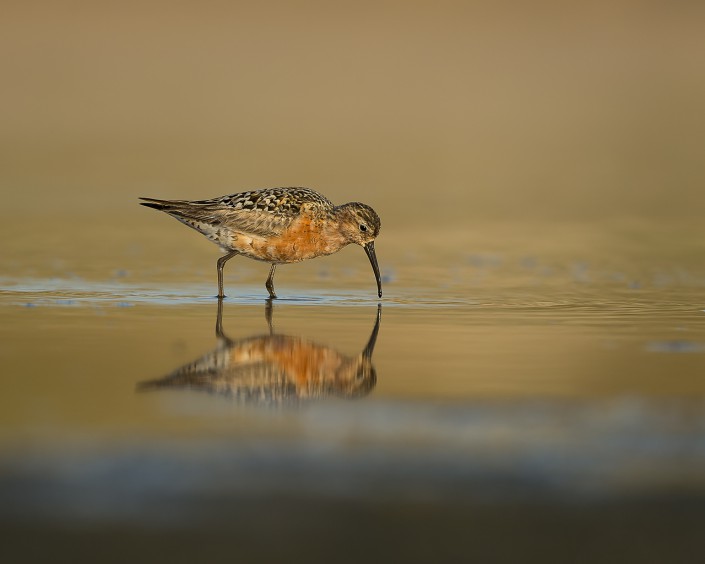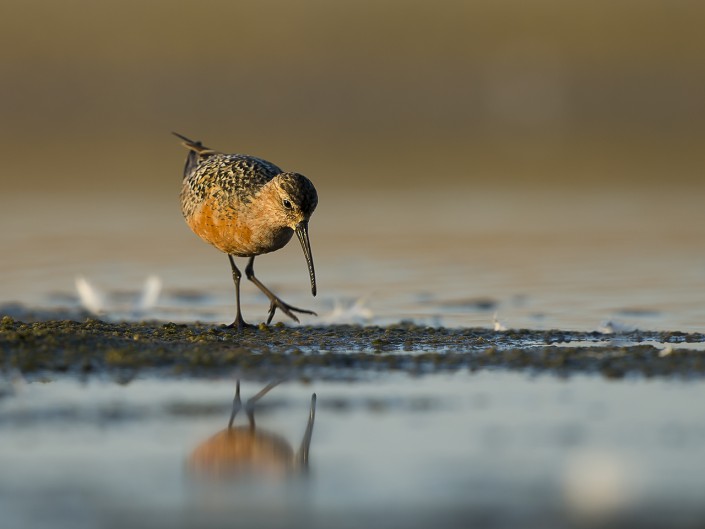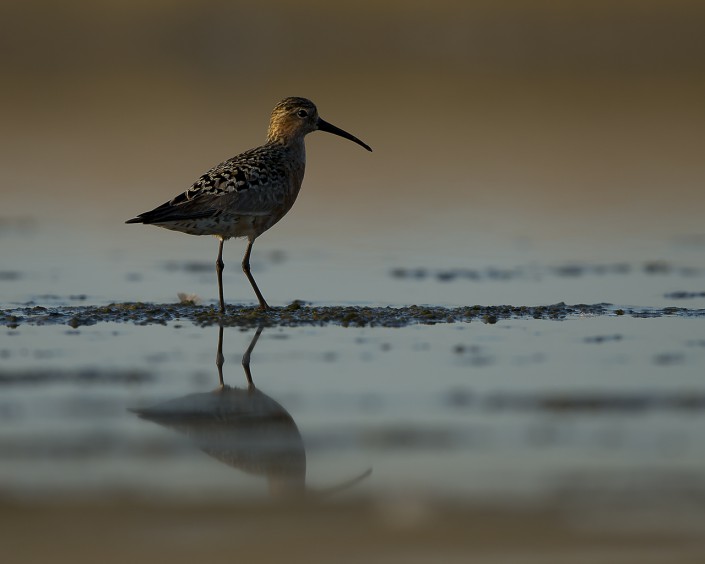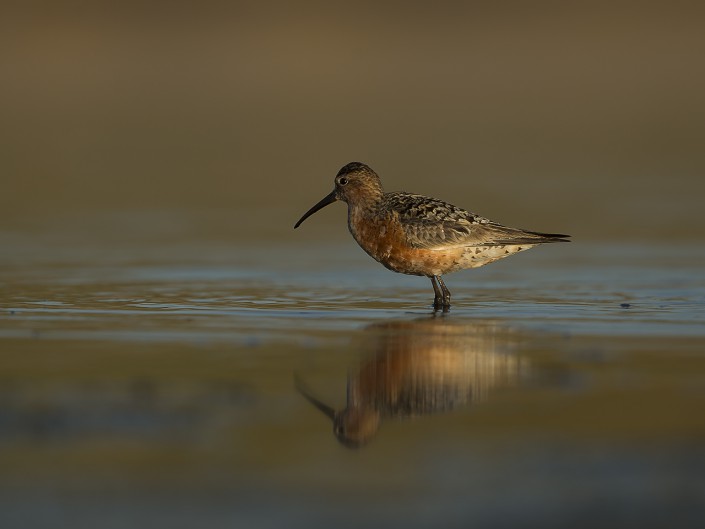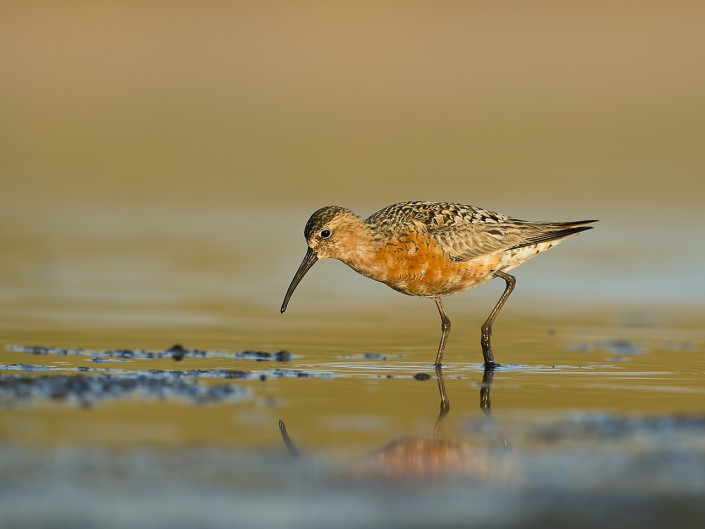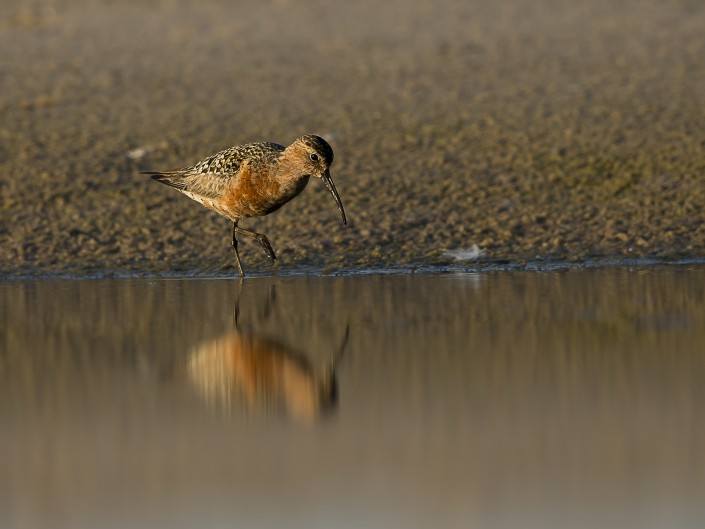This post is also available in: Swedish
Curlew sandpiper – Calidris ferruginea
Curlew sandpiper – Calidris ferruginea
These birds are small waders, only slightly larger than dunlin at 19.5–21 cm in length, but differ from Dunlin in having a longer down-curved bill, longer neck and legs and a white rump. The breeding adult has patterned dark grey upperparts and brick-red underparts. In winter, this bird is pale grey above and white below, and shows an obvious white supercilium. Juveniles have a grey and brown back, a white belly and a peach-coloured breast.
The male curlew sandpiper performs an aerial display during courtship. The clutch of 3–4 eggs are laid in ground scrape in the tundra and taiga, mostly in Siberia.
It is extremely difficult to measure breeding success or population trends in their breeding grounds because nests are scattered over a vast region and their positions influenced by localised weather.
Of all shorebird species, the curlew sandpiper has the smallest breeding range in relation to its non-breeding range. After breeding these birds migrate south to Africa, Australasia or India. South Africa is at the southern limit of the migration path from Siberia, 15,000 km (9,300 mi) or 130° of latitude away.
This wader is highly gregarious, and will form flocks with other calidrid waders, particularly dunlin. Despite its easterly breeding range, this species is regular on passage in western Europe, presumably because of the southwesterly migration route.
This is a fairly unusual species, and has been proposed as type species of the genus Erolia but the DNA sequence data is currently insufficient to resolve its relationships. This matter is of taxonomic relevance since, as the curlew sandpiper is the type species, a close relationship with the small “stint” sandpipers would preclude the use of Erolia for the present species. The curlew sandpiper is one of the species to which the Agreement on the Conservation of African-Eurasian Migratory Waterbirds (AEWA) applies.
It sounds like this
Recording by Albert Lastukhin from Xeno-canto









































